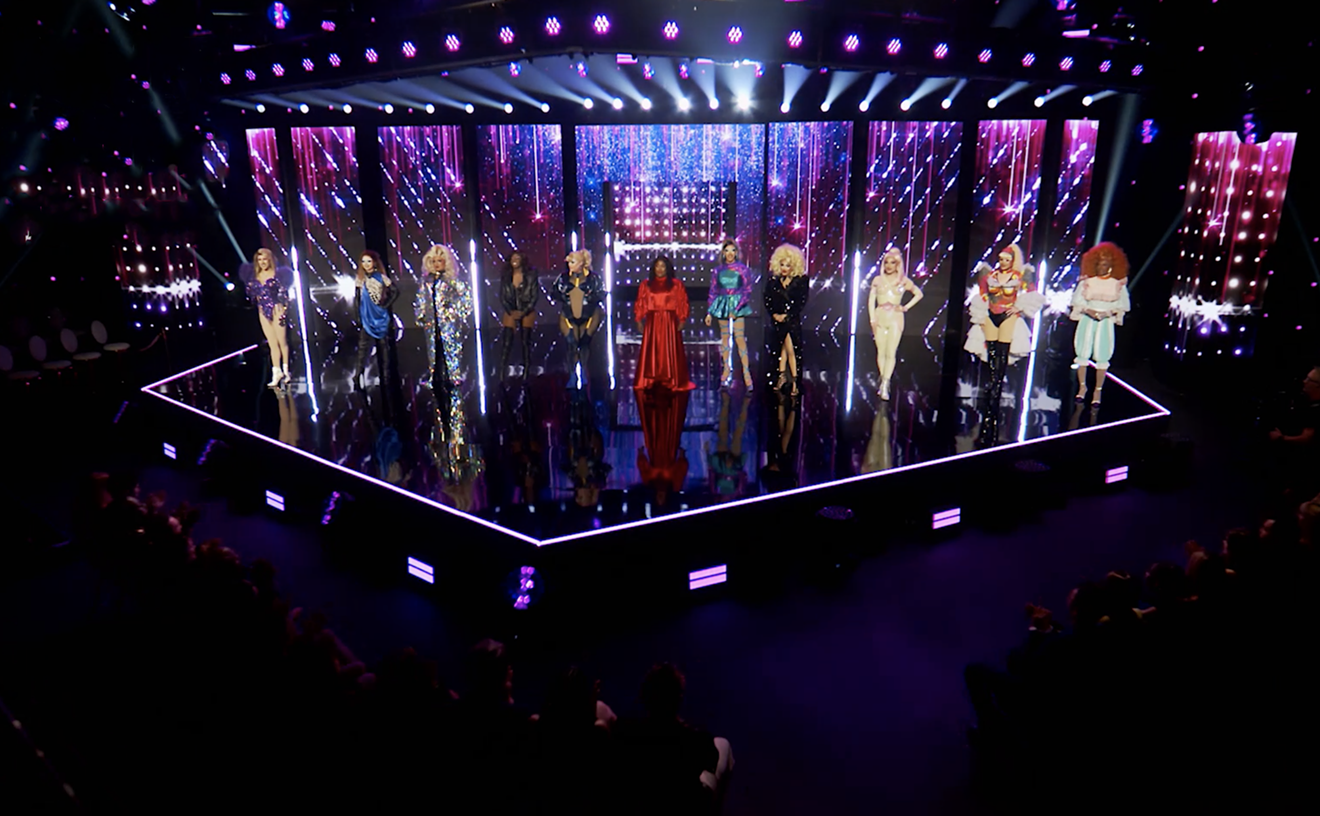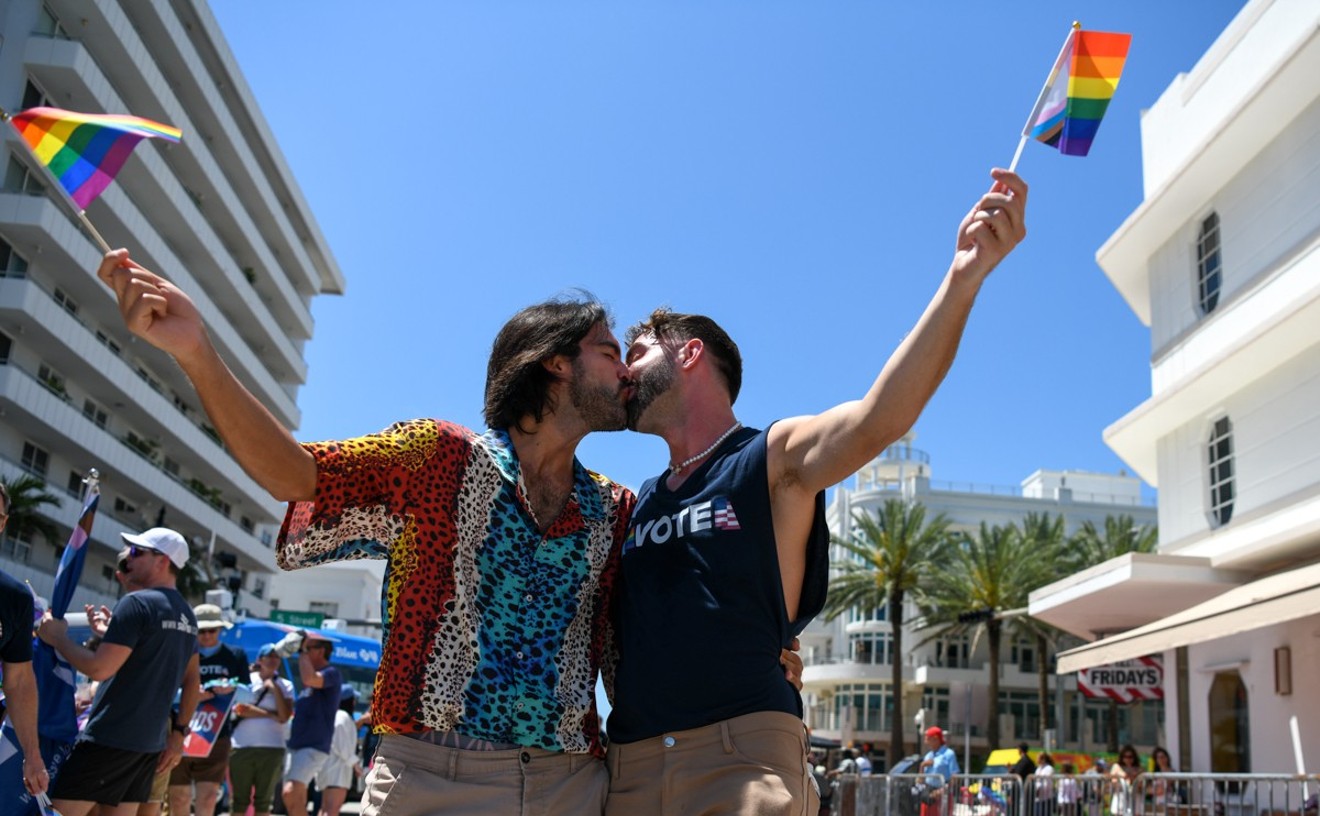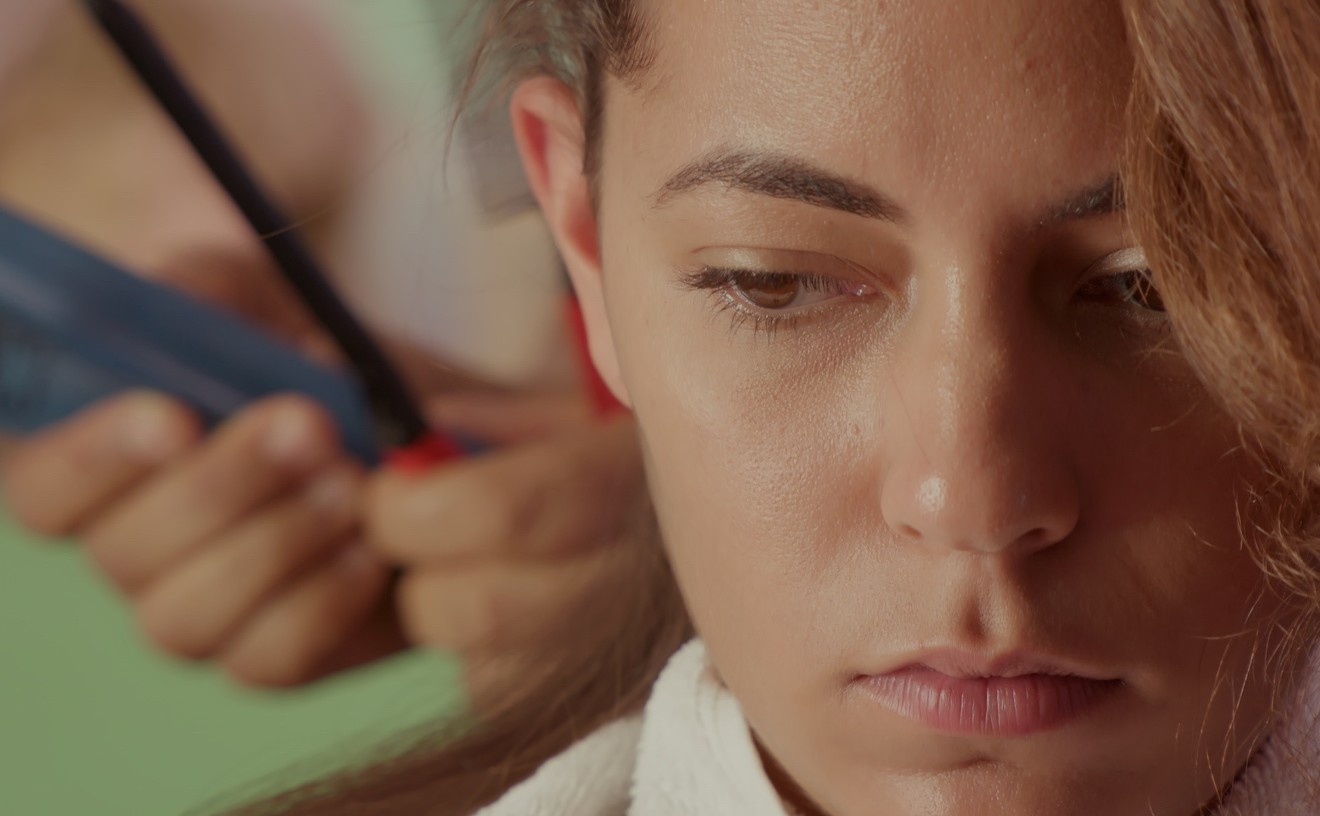Her latest art debrief, "The Nudist Museum," unfolds at the Bass, where she has re-created every nude in the museum's permanent collection to highlight the "impoverishment of our relationships to our naked selves." Expect zoomed-in interpretations of fleshy, Rubensesque bodies that spill over worn, secondhand frames. As a contrast, contemporary sexualized nudes from today's media will paper the wall behind the paintings. Nudity starts getting the third degree when the exhibit opens this Saturday.
We spoke to Harvey about how a legal mind thinks about art and why she decided to explore the idea of nakedness in a Miami museum.
New Times: You've been educated in law as well as art. Does your legal background inform your work?
Ellen Harvey: For a long time I always thought that my legal background
had nothing to do with my artwork. It was just something that I had done
in order to support myself at a time when I didn't think I could make
it as an artist. More recently, I realized that there is a common
denominator: I'm most interested in the ways in which unspoken rules
govern our lives.
I'm really interested in how people decide that someone is an artist, or
that something is art. Who decides? And what about all those people
who think they are artists but nobody else does? When I was a lawyer, I
was fascinated by which things people need to agree on in negotiations
and which things are just taken for granted. These things are very
culture-specific but they're often invisible within a culture. As an
artist, I like making the invisible, visible. For example, the "Nudist
Museum" is all about making visible our contemporary assumptions about
nudity in and outside of an art context.
Your "New York Beautification Project" paintings recontextualize
traditional landscapes. They seemed to imply that romantic countrysides
exist only in the dreams of city dwellers. What constructs are you
questioning in "The Nudist Museum"?
Miami is such a sexy city compared to New York. It's warm and people
wear less clothing so I suppose nudity was just on my mind. Also, I'm
interested in cliches of art production and the nude is one of the great
genres of painting and something that many people immediately think of
when they think of art. I've worked with the history painting, the
landscape, the portrait. It was time to do something with the nude.
I was lucky in that the Bass Museum has a really interesting (but
fortunately, not too large) collection so I thought it would be great to
start by looking to see what nudes they had. Once I saw them all, I
realized that I had a project. The nudes were so different from what we
think of now when we think of nudity. A lot of the nudes were
religious or of children. Only a very few of the artworks fell into the
category of the sexualized nude and even then the bodies depicted were
quite radically different from what we would consider to be attractive
today.
reoccurring theme in your work. Does the theme appear in "The Nudist
Museum"?
Failure is interesting to me because I think it's something that links
art to the larger human condition. Artists try to achieve the
impossible: to create something extraordinary that in the end is almost
never as extraordinary as they hope it will be. Similarly, we all try
to accomplish things that seldom work out perfectly. It's a very, very
human thing to do. The "Nudist Museum" is really about the failure or
impoverishment of our relationship to our own naked selves.
We live in a society that only really accepts the perfect sexualized
nude, but the reality is that we have bodies throughout our lives and
that even at our prime, very few of us look like the "acceptable" nudes
of the mass media. Nudity can also mean so much more than sex and it's
sad to have such a interesting and potent metaphor so reduced in
meaning. In a sense, we are all failures in that we almost all fail to
conform to the physical stereotypes of our culture but also in the sense
that we allow these stereotypes to have so much power.
Can you describe your process for creating these pieces for the Bass Museum?
I wanted my piece to look like a real collection so I bought a lot of
second-hand frames. I then printed out the images sent by the Bass
Museum of all their artworks that contained nudity and made free-hand
copies on oils, cropping the images to accentuate the nudes and painting
everything other than the actual nudes in shades of black and white.
The sizes of the paintings were determined more or less by the sizes of
the second-hand frames and the paintings spilled out onto the frames to
alert viewers that what appears to be a collection of older paintings
was in fact something a little different. The wallpaper behind the
paintings will contain fragments of contemporary mass media nudes to
provide a contrast to the paintings.
We read about two occasions where you did free portraits of the public
in exchange for their critique. Did you find that the public was
critical in their response?
I did "100 Free Portraits" on the streets of New York and "100 Visitors
to the Biennial Immortalized" in the context of the Whitney Biennial in
2008. The difference between the evaluations of the participants was
surprising even to me: on the streets, people were very critical of
their 15 minute portraits. In the Biennial, people were extremely kind
and complimentary. I don't think that I got better as a portraitist so I
assume that people were hesitant to be critical of a "serious" artist,
while they had no difficulty being extremely critical of a random street
artist.
Any plans to do live portrait series in Miami - perhaps during Art Basel?
I think I'm done with that project. I don't like to repeat myself. . .
Meet Harvey this Saturday, when "The Nudist Museum" opens. The exhibit continues until November 7. The museum is open Wednesday through Sunday from 12 to 5 p.m. Tickets cost $8 general admission, $6 for seniors and students, and is free for members. Call 305-673-7530 or visit bassmuseum.org.










